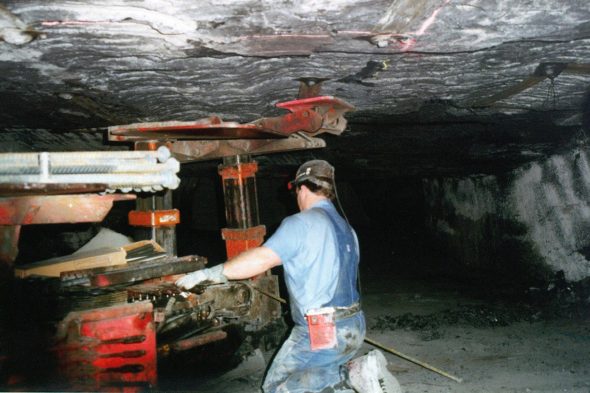What is driving the spike in black lung disease among coal miners?

Rates of severe coal workers’ pneumoconiosis — also known as black lung disease — among coal miners have been on the rise recently despite regulations on exposure to dusts associated with mining.
Researchers believe the higher rates of more severe lung disease may be due to greater exposure to silica, likely as a byproduct of going after ever-narrowing coal seams that require cutting through more rock to reach. Silica dust is much more toxic to the lungs, but little is known about its contribution to black lung disease at the molecular level, and researchers don’t know how silica and coal or other dusts together might interact to influence the development of disease.
A new $750,000 grant from the Alpha Foundation for the Improvement of Mining Safety and Health will support researchers in the University of Illinois at Chicago Mining Education and Research Center working to find out how various mining dusts contribute to lung disease.
The center, which is housed in the UIC School of Public Health, manages several coal mining research projects at UIC, including a $1.8 million, three-year grant from the Alpha Foundation for the Improvement of Mining Safety and Health, Inc., that will help determine why mine dust-related lung diseases, including progressive massive fibrosis and rapidly progressive pneumoconiosis, are on the rise.
“We know that coal and silica dusts increase the risk for development of black lung disease, but we don’t know much about how mixtures behave and what combinations are worse for lung health,” said Dr. Leonard Go, assistant professor of environmental and occupational health sciences in the UIC School of Public Health and an investigator on the grant. “We want to be able to create ‘mine dust risk profiles’ for pulmonary disease that can be used to inform policy and improve regulations limiting exposure to these dusts.”
Go and colleagues will collect various types of mining-associated dusts from mines in the Appalachian region including silica, coal and “rock dust” — a substance applied to coal mine walls to reduce explosion risk from fine coal dust.
The researchers will determine the exact composition of all dusts collected. They will then expose mice to various combinations of these dusts to determine if there is a specific mixture that is particularly damaging to the lungs. They will collect data on changes in gene expression in the lung tissue of mice after they are exposed to dusts to see if there are changes in biomarkers indicative of the development of pulmonary fibrosis.
The researchers also will examine publicly available Mine Safety and Health Administration data on respirable dust in various coal mines in the U.S. and employment data to see if there are any specific coal dust profiles that seem to be linked to higher rates of lung disease among workers in those mines.
“From what we know of this recent spike in black lung disease, we believe there may have been a significant change in the respirable dust miners are exposed to and this may be driving the increase in cases,” Go said. “The more we know about the risk profiles of these dusts, both individually and in combination with each other, the better the industry will be able to focus their monitoring and protective efforts.”
Dr. Robert Cohen and Kirsten Almberg of UIC; Emily Sarver and Cigdem Keles of Virginia Tech University; Dr. Scott Budinger of Northwestern University and Dr. Cecile Rose of National Jewish Health are co-investigators on the grant.
